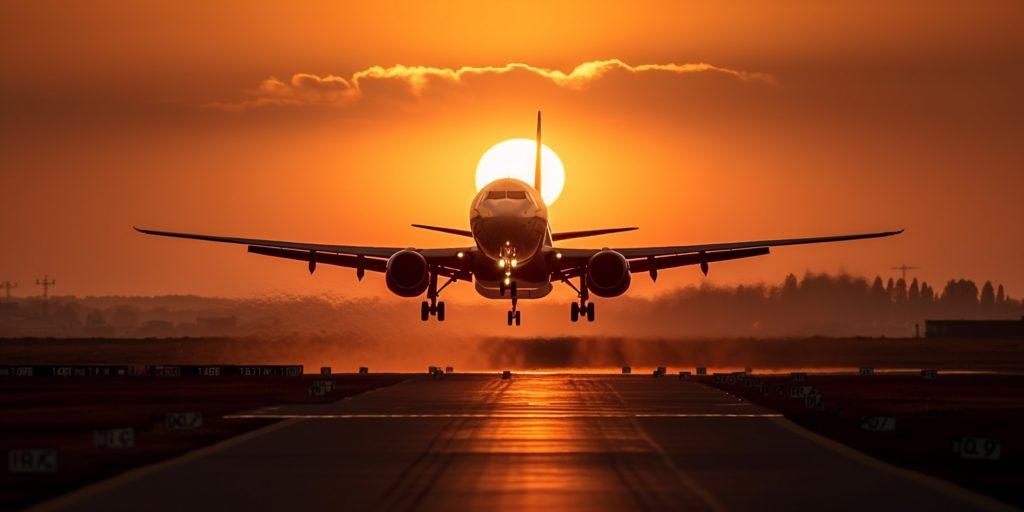Education & Career Trends: November 17, 2024
Curated by the Knowledge Team of ICS Career GPS

Original Article published on indiatoday.in
Becoming a pilot is a dream that soars high above the clouds for many young Indians. The allure of flying an aircraft, the promise of adventure, and the prestige of being a pilot are enticing.
However, the journey to the cockpit is rigorous and requires dedication, substantial financial investment, and a clear understanding of the path ahead.
From obtaining the necessary licenses to gaining practical flying experience, aspiring pilots must navigate a series of challenges that test both their skills and perseverance. The aviation industry, while full of opportunities, is highly competitive, and the road to becoming a successful pilot involves much more than simply learning to fly — it’s about committing to a long-term career that demands continuous learning, resilience, and passion for the skies.
Eligibility Criteria
Before one can begin training to be a pilot, some essential standards must be fulfilled. The eligibility criteria for a person to become a pilot in India is that the person should have passed the 10+2 examination with Mathematics and Physics as the subjects. Usually, a passing average of fifty percent is expected in these subjects. Those students who could not study these subjects in high school can take similar classes at the National Institute of Open Schooling (NIOS).
Another important factor to consider is age. While training can begin at 16, you cannot obtain a Commercial Pilot License (CPL) before turning 18.
However, the most important aspect of your eligibility is your health. The candidates are subjected to a Class II medical examination and a Class I medical examination conducted by the medical examiners appointed by the DGCA before they are allowed to fly.
A Class 1 medical certificate is valid for 12 months for most pilots under 60 years of age. In contrast, a Class 2 certificate is valid for 60 months for pilots under 40, and for 24 months for those aged 40 to 50 years.
Training and Courses
Here’s the breakdown of the process of becoming a commercial pilot in India:
- Private Pilot License (PPL): One can work towards a PPL after getting an SPL. A minimum of 40 hours of flight time is necessary, with 20 hours flown independently and 20 hours flown alongside an instructor.
- Commercial Pilot License (CPL): The first step in flying for commercial purposes is obtaining a Commercial Pilot License (CPL). This means recording a minimum of 200 flying hours, including cross-country and instrument flying. This might seem a daunting task, but with the right training and dedication, it’s a goal that’s well within your reach.
- Airline Transport Pilot License (ATPL): Airline Transport Pilot License is the highest level of aircraft pilot certification. The ATPL course is designated to train pilots to work in an airline company. Those certified as Airline Transport Pilots are authorised to act as pilot-in-command of an aircraft in air carrier service (airline).
- Type Rating: Type rating is a type of aircraft certification that is granted by aviation authorities to pilots who have completed training and testing on a specific type of aircraft. This type of certificate allows the pilot to operate that type of aircraft.
Costs Involved
Becoming a pilot in India can be expensive, and the total cost could vary depending on the flight school and type of aircraft used during training. These include the flying time costs, ground training costs, examination costs, and other incidental costs.
Selecting the Right Flight School
Selecting a trustworthy aviation academy is essential as it determines the quality of instruction that will be given. India’s DGCA(Director General of Civil Aviation) acknowledges multiple flight schools in the country. Otherwise, if someone wants to pursue pilot training at a foreign flight school, they can convert their license to India. Before signing up for a school, one must familiarise oneself with the aircraft, instructors, and job placement statistics.
To simplify, all the above-mentioned processes start from the Medical Examination to the completion of CPL and doing Type rating. Few Flying Schools offer Integrated programmes called cadet programmes which is an end-to-end process.
Career Prospects
Following the completion of CPL, you have the option to apply for positions at commercial airlines. Because of the growing aviation sector, India requires more pilots. New pilots can start as First Officers with the chance to advance to the position of Captain.
To sum up, embarking on a career as a pilot in India is a challenging but fulfilling path. A combination of academic skills, physical strength, significant financial commitment, and perseverance is needed. Through proper training and commitment, individuals who aspire to become pilots can transform themselves into a successful career in the aviation industry.
…
Have you checked out yesterday’s blog yet
Goover — A New Search Engine Challenging Perplexity AI
(Disclaimer: The opinions expressed in the article mentioned above are those of the author(s). They do not purport to reflect the opinions or views of ICS Career GPS or its staff.)
Like this post? For more such helpful articles, click on the button below and subscribe FREE to our blog.



